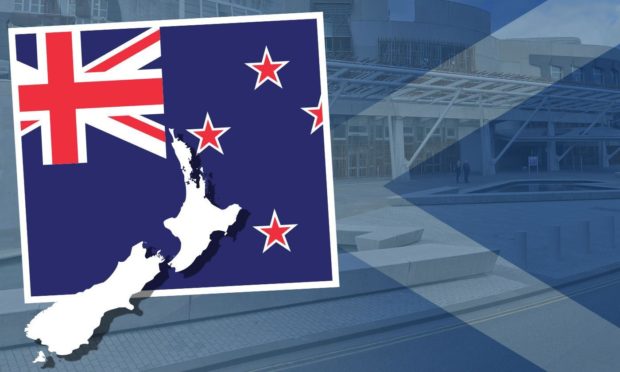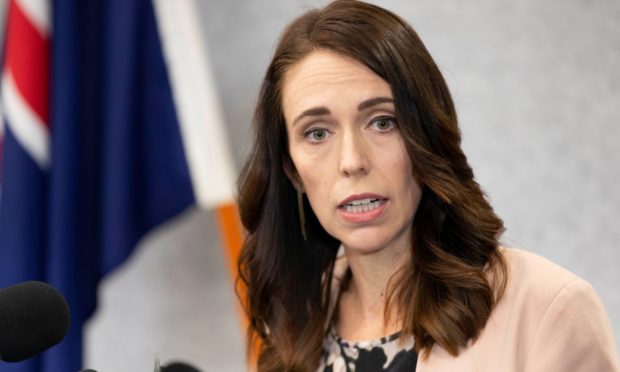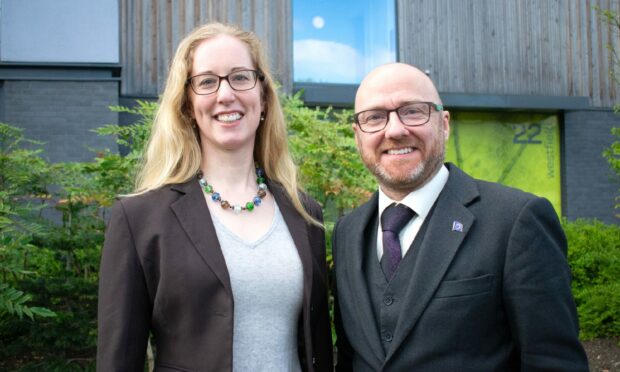Nicola Sturgeon’s SNP are at the end stage of talks to form a partnership with the Scottish Greens which would see a pro-independence majority government. It’s a deal that’s being called a ‘New Zealand-style coalition’ but what does that mean?
In Scotland the two parties agreed to discuss a “partnerships” plan to work together in government, but it would stop short of being a formal coalition.
Protracted talks are believed to be coming to a close to form an agreement that would likely put at least one Green MSP in government for the first time.
For the SNP it would give them a pro-independence majority government in power to counter Boris Johnson’s charges that Nicola Sturgeon failed to get a majority for independence in May’s election – despite Scottish voters again returning an overwhelmingly pro-independence parliament.
It would also allow the SNP to burnish their green credentials – which don’t always stand up well to scrutiny – ahead of the COP26 climate change summit being held in Glasgow at the end of the year.
For the Scottish Greens it would give them a voice in government, and they’ve certainly been working to get the SNP to incorporate some of their manifesto pledges into the government’s programme during negotiations.
In short: each party needs to be able to sell this partnership as a good thing to their MSPs, rank-and-file members and potential voters alike, and show they are each getting some concrete benefits out of it.
The political situation in Aotearoa
This likely scenario of an official, negotiated SNP-Green alliance has striking similarities to the situation in New Zealand where Jacinda Ardern’s centre-left Labour Party are also in a partnership with the Greens.
The NZ Greens – with a male and female co-leadership team just like in Scotland – also stopped short of a formal coalition deal but gave party leaders James Shaw and Marama Davidson government portfolios in a broad cooperation agreement.
A number of shared policies were also agreed between the two sides.
“The Greens can make some policy gains in crucial areas to their ideology. In this case on family violence, housing, and climate change” explains Dr Lara Greaves, who teaches politics at the University of Auckland in New Zealand.
“Fundamentally, the purpose of being in politics is meant to be to make policy change or make the world a better place. Ultimately, the deal provided an opportunity for the Greens to try to make some policy gains in areas important to their voters” she adds.
Jacinda Ardern’s Labour party are also able to use the partnership with an eye towards the next elections in 2023 where they might not have the poll bounce they enjoyed at last autumn’s election, credited with the government’s handling of the coronavirus pandemic.
Partnership could be risky business for the Greens
There are however risks involved for the smaller partner in New Zealand which likely translate to Scotland as well.
“Some Green party members have publicly expressed that this looks like the Greens selling out or becoming too centrist” says Dr Greaves.
There’s criticism too in Aotearoa – which Nicola Sturgeon, Patrick Harvie and Lorna Slater will want to avoid – that the Green ministerial portfolios have been carved out of bits of other jobs, and don’t have the proper muscle of staff and budgets.
They end up being more symbolic than substantive.
Another parallel between Scotland and New Zealand is the longer term implication for the Greens in an alliance with the ruling party.
“Parties have to constantly present as a distinctive identity or brand versus a major party. The chance that a party might not return to parliament represents a psychological risk for voters (who want their vote to count), so the minor party have to be worthy of that risk” says the University of Auckland’s Lara Greaves.
A major challenge for the Greens, she says, is that they might not look distinctive enough and end up losing voters.


